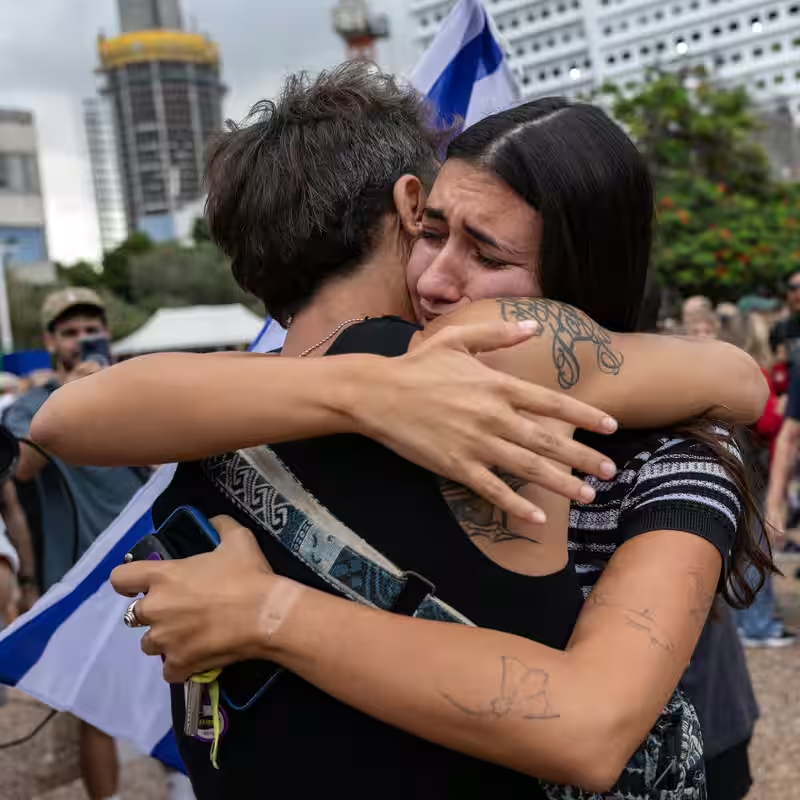Streets filled with flags, tears of relief, and cautious smiles marked an emotional turning point in the Middle East this week as news of a potential Gaza ceasefire deal spread across Israel and the Palestinian territories. After two brutal years of war—the deadliest chapter in the century-old Israeli-Palestinian conflict—people on both sides dared to hope for peace. But many also whispered the same fear: “What if it falls apart?” .
Table of Contents
- Public Reactions: Celebration Meets Caution
- What’s in the Deal—and When?
- Hostage and Prisoner Exchange Details
- Trump’s Diplomatic Push and Regional Impact
- What’s Still Missing from the Agreement
- Gaza’s Humanitarian Emergency
- Sources
Public Reactions: Celebration Meets Caution
In Tel Aviv and Jerusalem, Israelis waved blue-and-white flags, hugged strangers, and chanted “Bring them home!”—a reference to the 20 hostages still believed alive in Gaza. In Gaza City and Khan Younis, despite rubble-strewn streets and no electricity, families gathered on rooftops, clapping and crying as rumors of peace turned into official statements.
Yet beneath the joy was deep anxiety. “We’ve been fooled before,” said one Palestinian shopkeeper in Rafah. “Until I see my children eat a full meal without fear of bombs, I won’t believe it’s real.”
What’s in the Deal—and When?
On Thursday, October 9, 2025, Israeli cabinet ministers formally approved the ceasefire framework brokered in Cairo. According to Israeli Foreign Minister Gideon Saar, the truce will begin immediately after the vote—though government spokeswoman Shosh Bedrosian said it would take effect 24 hours post-approval .
Either way, the clock is ticking toward a historic moment: the release of hostages and the first major Israeli military pullback from urban Gaza since the war began.
Hostage and Prisoner Exchange Details
President Trump confirmed that the remaining Israeli hostages are expected to be released “Monday or Tuesday” in exchange for Palestinian prisoners held in Israeli jails. While the exact number of prisoners hasn’t been disclosed, the swap is seen as a critical confidence-building measure.
Trump’s Diplomatic Push and Regional Impact
President Trump, who called the agreement a “momentous breakthrough in the Middle East,” plans to travel to Egypt for the ceremonial signing and then address Israel’s Knesset—an unprecedented move underscoring U.S. involvement. His administration has coordinated closely with Egypt, Qatar, and the UAE, all of whom played key backchannel roles .
Meanwhile, 200 U.S. support troops are already arriving in Israel to help run a new civil-military coordination center aimed at managing aid, security, and ceasefire logistics .
What’s Still Missing from the Agreement
Despite the optimism, major questions remain unanswered:
- Will Hamas agree to disarm?
- Who will govern post-war Gaza?
- How will reconstruction be funded?
- Will the ceasefire hold beyond the initial phase?
These issues were deliberately deferred to “future discussions”—a diplomatic necessity that also poses the greatest risk to long-term peace.
Gaza’s Humanitarian Emergency
The human cost of the war is staggering: over 67,000 lives lost and 90% of homes destroyed . Even if the guns fall silent, millions face starvation, disease, and displacement. The ceasefire deal promises renewed aid flows, but bottlenecks at border crossings and security concerns could delay relief.
Final Thoughts
The Gaza ceasefire deal has ignited a fragile flame of hope in a region long shrouded in darkness. Whether it becomes a lasting peace—or another broken promise—depends on what happens next, not just in boardrooms, but in the hearts of those who’ve suffered the most.




